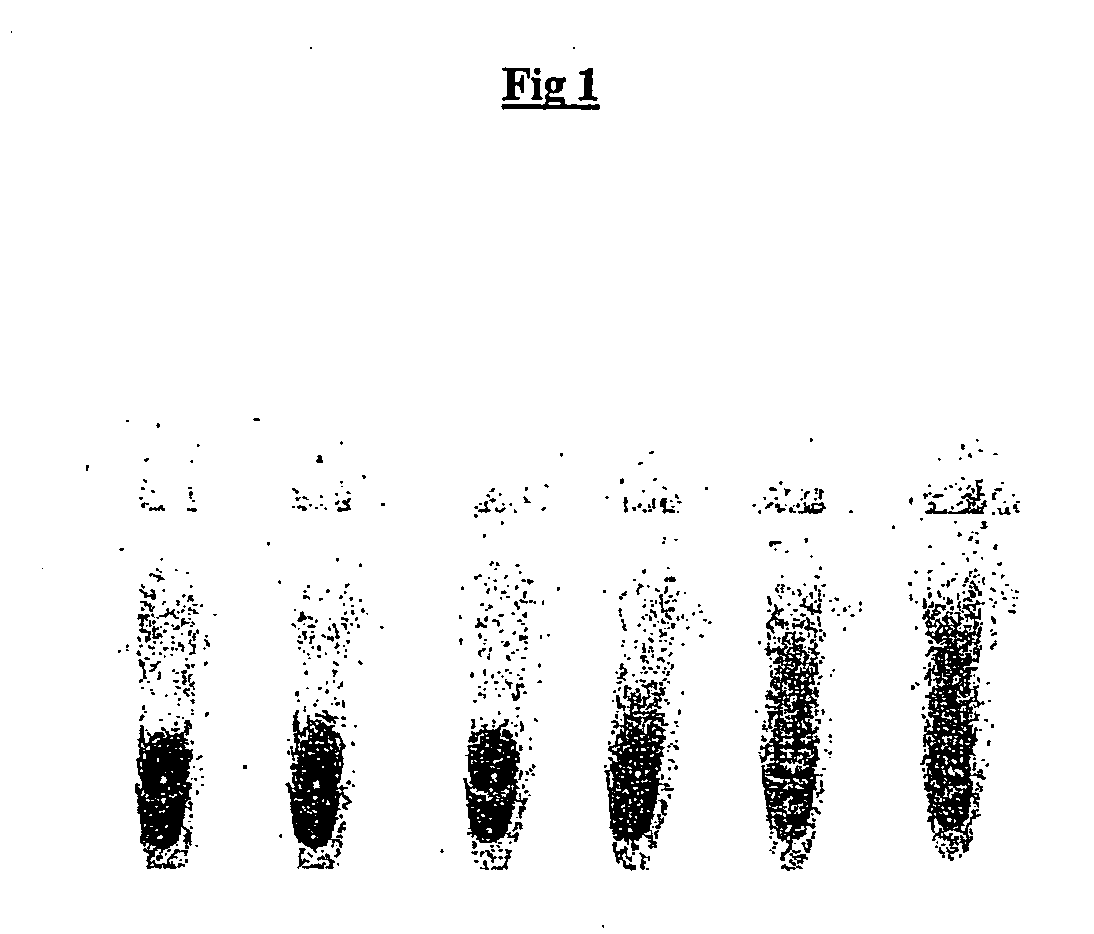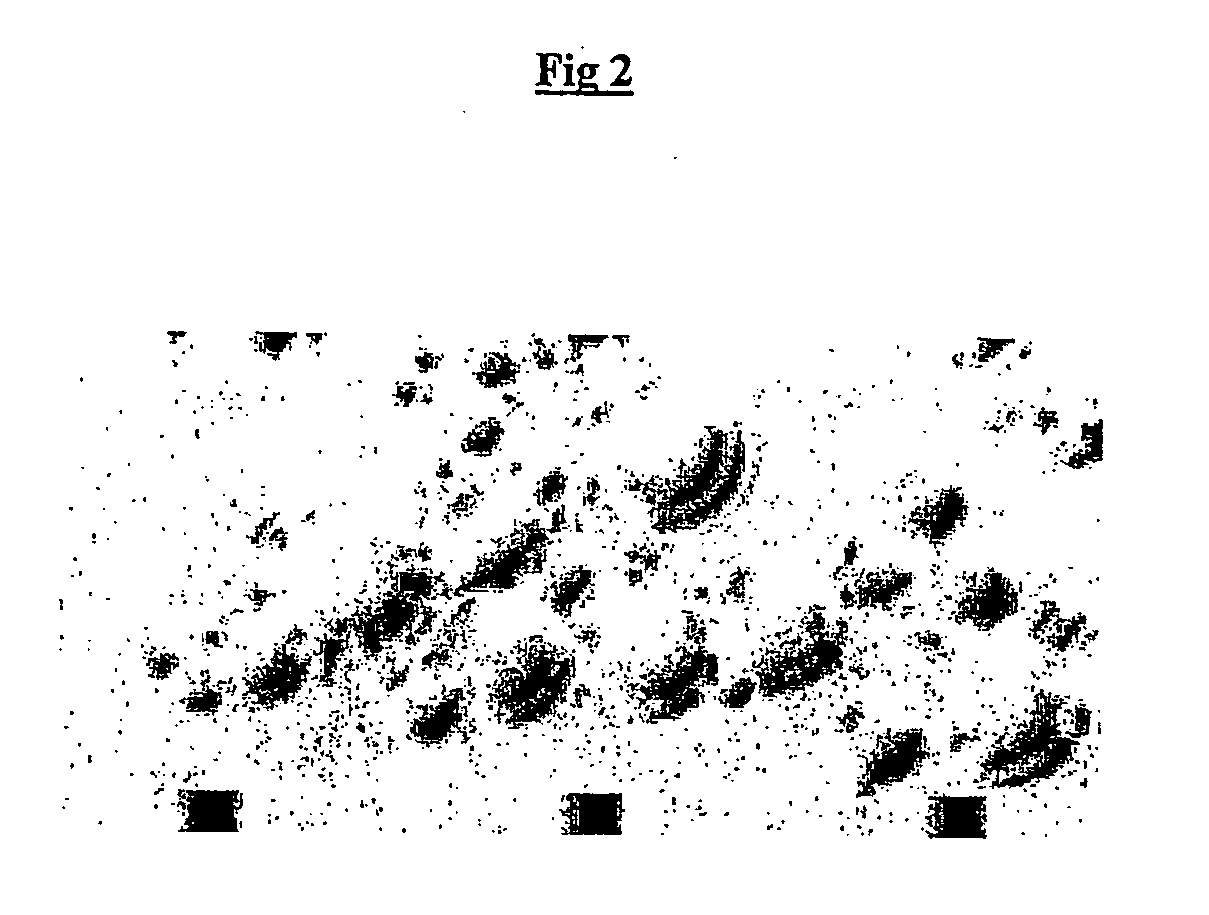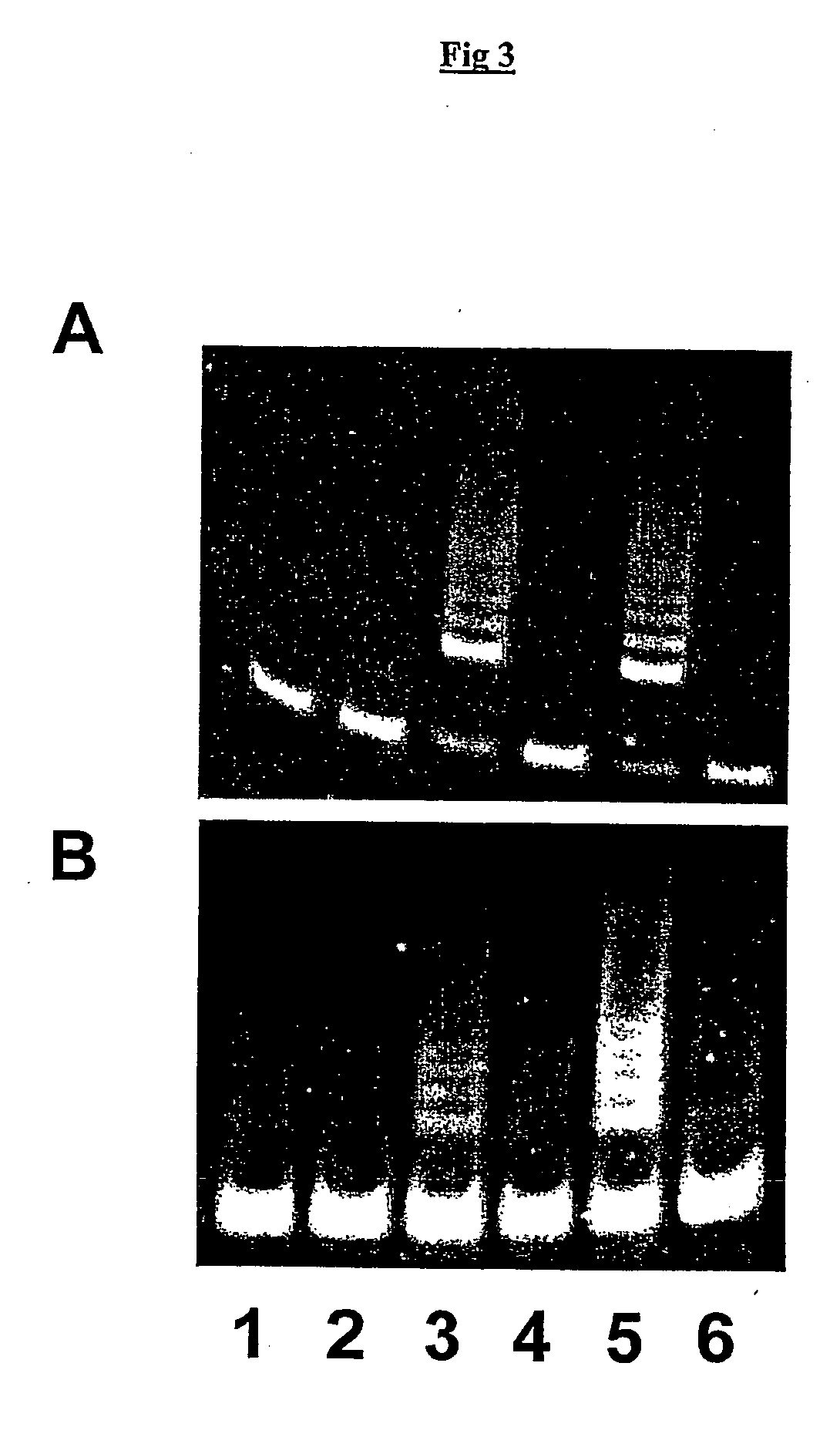Emulsion compositions
a technology of composition and emulsion, applied in the direction of transferases, non-active ingredients of oil/fat/waxes, genetic material ingredients, etc., can solve the problems of not being able to select for a particular gene product activity, the number of modifications of emulsion composition used with prokaryotic expression systems was unsuccessful in conferring such ability, and the method is not suitable for some proteins of interes
- Summary
- Abstract
- Description
- Claims
- Application Information
AI Technical Summary
Benefits of technology
Problems solved by technology
Method used
Image
Examples
example 1
[0171] Example 1
Conventional Emulsions do not Support Efficient Eukaryotic In Vitro Translation
[0172] An oil phase formulation comprising 4.5% v / v sorbitan monooleate (Span 80, Fluka; 85548) and 0.4% v / v polyoxyethylenesorbitan monooleate (Tween 80, Sigma Ultra; P-8074, and 0.05% v / v t-octylphenoxypolyethoxyeth-anol (Triton-X 100, Sigma), in mineral oil (Sigma; M-3516) ("original CSR mix") was used to emulsify a RRL expression reaction. All RRL reactions were performed using the TNT T7 quick coupled transcription / translation system (Promega)) expressing firefly luciferase from a plasmid template. A 50 .mu.l expression reaction was set up on ice comprising 80% RRL (v / v), methionine 0.02 mM, and luciferase plasmid template (1 ug). A 40 .mu.l aliquot of this was emulsified by dropwise addition (1 drop per 5 secs) to 100 .mu.l of ice-chilled oil phase under constant stirring (1000 rpm). After addition of the last drop (approximately 20 secs) stirring was continued for an additional 3-4 ...
example 2
Anti-Oxidants do not Restore Efficient Eukaryotic In Vitro Translation
[0177] Mammalian translation is regulated, inter alia, by the family of eIF-2a kinases in response to cellular stress (reviewed by Dever (1999), TIBS, 24, 398-403). eIF-2.alpha. kinases contain a sensor domain and a conserved eIF2 kinase domain. Their function is to phosphorylate eIF-2.alpha. (which shuts down translation) in response to stimuli received through the sensor domain. This serves to protect the cell in circumstances of cellular stress from wasting resources (protein translation consumes large amounts of cellular energy) or as an anti-viral defence by preventing expression of the viral genome. Four different kinases are known to respond to different types of stress signals (Table 1).
1TABLE 1 Stress-responsive eIF2 kinases Name Activating signal HRI oxidative stress (low heme) PKR viral infection (dsRNA) GCN2 starvation (low amino acids, uncharged tRNA) PERK heat stress, viral infection (unfolded protei...
example 3
Neither cAMP Nor 2-AP Enable Efficient Eukaryotic In Vitro Translation
[0182] We also attempted a direct inhibition of the eIF2 kinase pathway using cAMP or 2-aminopurine (2-AP). Although cAMP produced a small improvement when used on its own, it proved not-additive with the beneficial effects of DTT (not shown). Both cAMP and 2-AP are rather unspecific inhibitors of eIF2 kinases (there are at present no available specific inhibitors) and presumably interfere with other processes within the RRL translation system.
PUM
| Property | Measurement | Unit |
|---|---|---|
| diameter | aaaaa | aaaaa |
| diameter | aaaaa | aaaaa |
| diameter | aaaaa | aaaaa |
Abstract
Description
Claims
Application Information
 Login to View More
Login to View More - R&D
- Intellectual Property
- Life Sciences
- Materials
- Tech Scout
- Unparalleled Data Quality
- Higher Quality Content
- 60% Fewer Hallucinations
Browse by: Latest US Patents, China's latest patents, Technical Efficacy Thesaurus, Application Domain, Technology Topic, Popular Technical Reports.
© 2025 PatSnap. All rights reserved.Legal|Privacy policy|Modern Slavery Act Transparency Statement|Sitemap|About US| Contact US: help@patsnap.com



